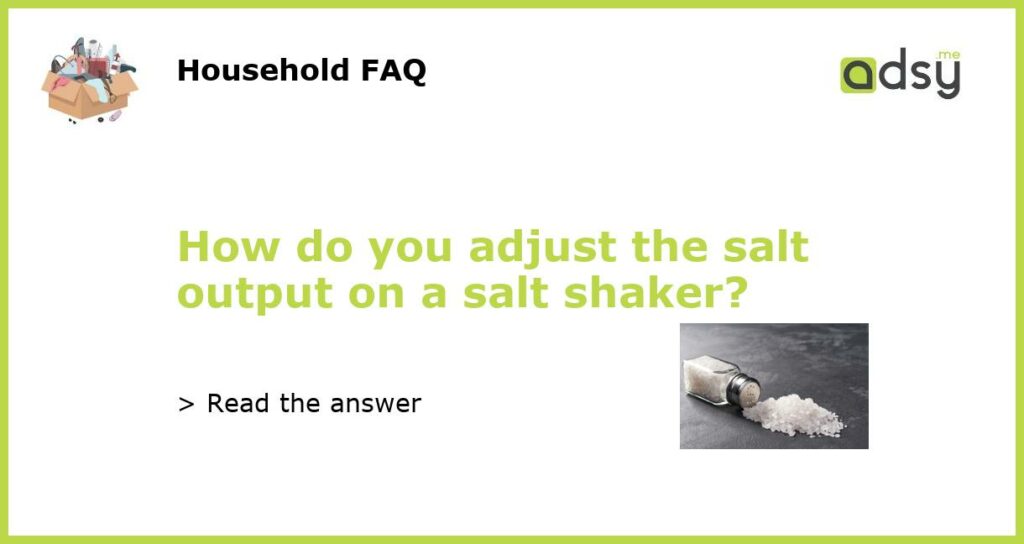Salt shakers are a common kitchen accessory that is used on a daily basis. However, sometimes the salt output from the shaker may be too much or too little, which can ruin the flavor of your food. In this article, we will discuss the different ways to adjust the salt output on a salt shaker to ensure that you are getting the perfect amount of salt for your dishes.
Choose the Right Shaker Design
Choose the Right Shaker Design
The first step in adjusting the salt output on a salt shaker is to choose the right shaker design. There are two main types of salt shakers – ones with large holes and ones with small holes. If you find that your salt shaker is releasing too much salt, you may want to switch to a shaker with smaller holes. On the other hand, if you find that your salt shaker is not releasing enough salt, you may want to switch to a shaker with larger holes. The size of the holes can greatly affect the amount of salt that is released, so choosing the right design is important.
Check the Salt Grain Size
Check the Salt Grain Size
Another factor that can affect the salt output on a salt shaker is the size of the salt grains. If you have larger salt grains, they may not flow through the holes in the shaker as easily, resulting in a lower salt output. On the other hand, if you have smaller salt grains, they may flow too easily through the holes, resulting in a higher salt output. Therefore, it is important to check the size of your salt grains and adjust accordingly. If you find that your salt grains are too large, you can try grinding them down to a smaller size. If you find that your salt grains are too small, you may want to switch to a different type of salt with larger grains.
Clean and Dry the Shaker
Clean and Dry the Shaker
Salt shakers can often become clogged or damp, which can affect the salt output. Salt can clump together when exposed to moisture, which can make it difficult for the salt to pour out of the shaker. To ensure that your salt shaker is working properly, it is important to clean and dry it regularly. You can do this by rinsing the shaker with warm water and soap, and then allowing it to air dry completely before refilling it with salt. By keeping your salt shaker clean and dry, you can help to prevent clogs and ensure a consistent salt output.
Adjust the Shaker Lid
Adjust the Shaker Lid
Some salt shakers come with adjustable lids that allow you to control the size of the holes. If you find that your salt shaker is not releasing the desired amount of salt, you may want to check if your shaker has an adjustable lid. To adjust the lid, simply twist it clockwise or counterclockwise to open or close the holes. By adjusting the lid, you can customize the salt output to meet your preferences.
Experiment with Different Techniques
Experiment with Different Techniques
If you have tried all of the above methods and are still not satisfied with the salt output on your salt shaker, you may want to experiment with different techniques. For example, you can try shaking the shaker at different angles or speeds to see if it affects the salt output. Additionally, you can try tapping the bottom of the shaker to loosen any clumped salt. Sometimes, a simple change in technique can make a big difference in the salt output. Play around with different methods until you find the one that works best for you.
In conclusion, adjusting the salt output on a salt shaker is a matter of choosing the right shaker design, checking the salt grain size, cleaning and drying the shaker, adjusting the shaker lid, and experimenting with different techniques. By following these steps, you can ensure that you are getting the perfect amount of salt for your dishes, every time you use your salt shaker. So go ahead and make those adjustments, and take your culinary creations to the next level.






